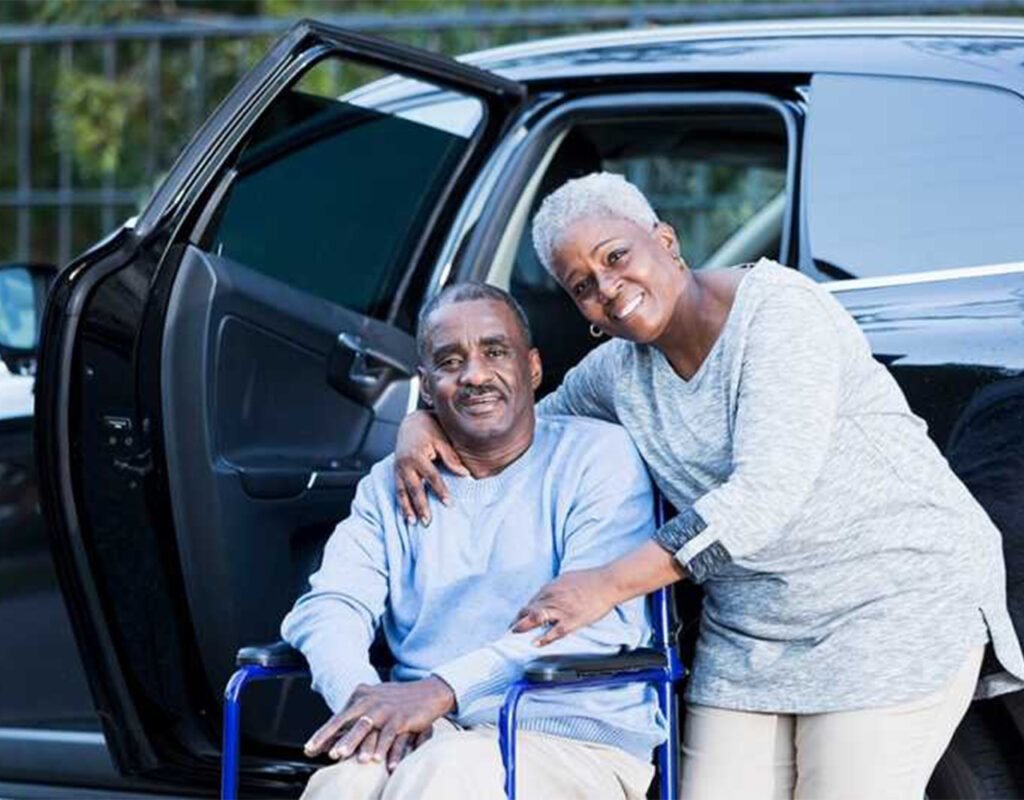When my grandmother repeatedly hit the mailbox while backing out of her driveway, she always had an explanation ready: “I had the sun in my eyes” or “Your grandfather distracted me.” Our family knew we had to do something. But no one wanted to be the one to tell her to stop driving. She was fiercely independent, didn’t agree that her driving was a problem, and didn’t understand our concerns.
Maybe there’s a similar story in your family. Or maybe you’re starting to think about your own abilities. As the first part of a two-part series, this post is designed to help people understand the warning signs to look out for and why driving skills change as we age. It also describes some ways to improve drunk driving and challenges to overcome.
A second post looks at ways to strike a balance that respects dignity – and safety – while also providing action plans for older drivers and their families.
How safe are older drivers on the road?
Unsafe drivers can be of any age, especially when alcohol is involved. Yet fatal traffic crashes have increased among both young and older drivers, according to data from the National Safety Council:
The number of fatalities in crashes involving drivers ages 15 to 20 increased nearly 10% between 2020 and 2021, totaling 5,565 deaths.
Among drivers ages 65 and older, fatalities increased 15% between 2020 and 2021, totaling more than 8,200 deaths.
While younger drivers may be inexperienced or more likely to be distracted or reckless, older drivers often overestimate their driving abilities. This may be one reason why many unsafe older drivers continue to drive despite lacking driving skills.
Per mile driven, the rate of motor vehicle crashes is higher for drivers age 80 and older than for nearly any other age group, according to the Insurance Institute for Highway Safety. Only the youngest drivers have a higher rate. And the rate of fatal motor vehicle crashes per mile driven is higher for drivers age 85 and older than for any other age group.
These statistics reflect the fact that an older driver may not be the only one injured or killed in a crash—the occupants of one or more vehicles can be affected, too. And then there are pedestrians and bicyclists who are at risk.
Clearly, the stakes are high when an unsafe driver is on the road. For older drivers with declining driving skills, it’s important to recognize the problem and understand why it’s occurring. The following four steps are a good place to start.

1. Are you seeing any warning signs?
As we age, driving skills can decline so slowly that worrisome changes aren’t obvious. Even when accidents and near-misses do occur, there are so many possible contributors—particularly other drivers—that it may not be clear that the older driver was at fault.
Warning signs that may indicate an older person is an unsafe driver include:
Concerned comments from family or friends
Reluctance of others to ride along
Objections from other drivers (why is everyone honking at me?) or traffic authorities (why do I get so many tickets?)
Getting lost on familiar roads
Consistently driving too slowly or too fast
Unexplained dents or scratches on the car
Frequent accidents or near-misses.
2. Why does driving ability tend to decline with age?
Although people can still drive safely as they age (and many do!), driving ability may decline due to:
medical conditions such as arthritis, neuropathy or dementia
medications such as tranquilizers or certain antidepressants
age-related changes in reaction time
problems with vision or hearing
other age-related physical changes such as reduced flexibility or strength
difficulty processing rapidly changing information. For example, an older driver is more likely than a younger driver to accidentally press the accelerator instead of the brake when braking suddenly.
3. What can and can't be reversed to improve driving?
Some changes that affect driving can be reversed or a solution can be found. For example, if driving is impaired due to cataracts, cataract surgery can restore vision and improve driving. If driving at night is difficult, it’s best to drive only during the day. If memory problems occur, it may still be possible to drive safely under more limited circumstances.
Driving problems due to advanced dementia or a severe stroke that impair judgment and physical ability are much less likely to be improved.

4. Accept that conversations about not driving are challenging
If there is no easy way to reverse or work around declining driving skills, accept that there are many challenges to overcome, whether you are the older driver or a family member.
Challenges for the driver:
Acknowledging declining skills is not easy. Driving impairment is a troubling milestone, a sign that the future may bring further loss of ability.
It can feel unnecessary and unreasonable. Most older people who have to decide whether it is safe to continue driving were good drivers not long ago. They may still see themselves as competent drivers and find attempts to limit their driving overcautious or demeaning.
Denial and defensiveness are common. Even when all the signs are there, it can be tempting for a poor driver to deflect blame (for example, by blaming other drivers).
Not driving means a loss of independence. Of course, there are other ways to get around, and non-drivers can be quite independent, too. But few alternatives can match the independence that comes with being able to drive. And depending on where you live, public transportation or other alternatives to driving may be limited.
Challenges for the family:
Often, the older driver does not share his family’s concerns about driving safety. This can lead to arguments, confrontation, and resentment.
The safety of others is at stake. The older driver with declining abilities can endanger many people besides himself: passengers in his care, other drivers and their passengers, bicyclists, and pedestrians.
It’s hard to know when the time is right. Talking about it too soon can lead to unnecessary restrictions on a loved one’s preferred mode of transportation, not to mention family arguments. Waiting too long can lead to avoidable tragedies.
Finding a Way Forward
As for my grandmother, none of us knew what to say. Should we try to get her to stop driving altogether, or let her get used to the idea over time? Maybe she could stop driving at night or limit her trips to short distances. Should we bring this to her doctor’s attention and let him determine the next steps? Or should we take an even harsher step and report her to the authorities?
If you’re asking yourself similar questions — or if you’re starting to wonder about your own driving abilities — you may feel strongly that it’s important to respect individual preferences, dignity and independence. But you also want to keep everyone safe from harm.
What are the best ways to strike a balance? Can you test and improve an older driver’s performance behind the wheel? Can you handle difficult conversations in a way that allows for both independence and safety? These are the topics covered in Part 2.

